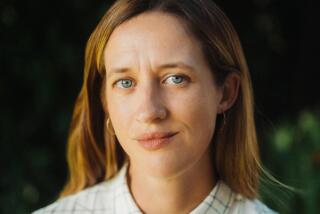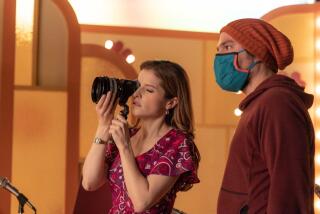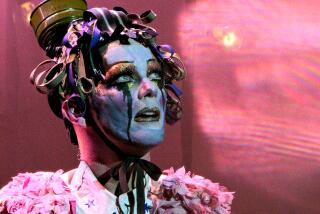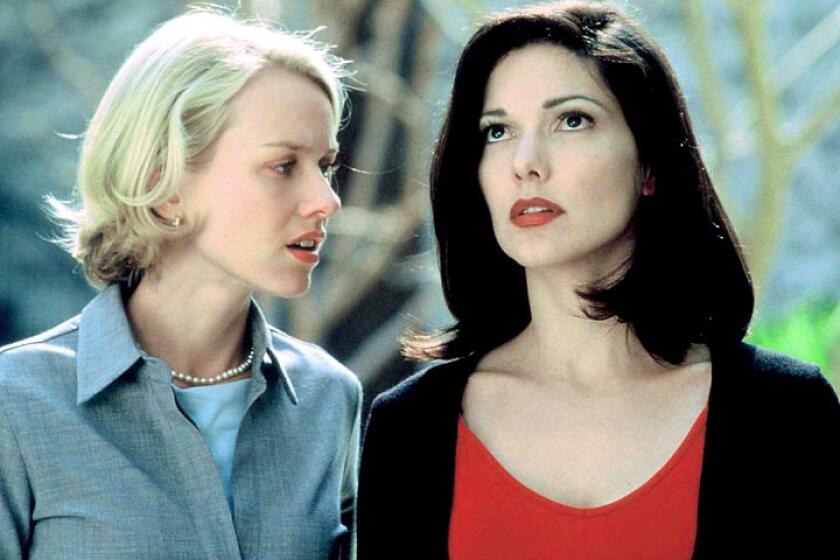Fast friends now
- Share via
IT wasn’t actually a mutiny on “The Bounty,” but during the production of that 1984 seafaring tale, star Anthony Hopkins and director Roger Donaldson didn’t quite hit it off.
“There was no secret that we had a tough time,” says Donaldson (“The Recruit”). “We could have killed each other. If anybody had said to either of us, ‘You will be working with each other again one day,’ we both would have said, ‘You have to be joking.’ ”
So perhaps the old adage is true, that time heals all wounds: The two veterans collaborated on the new film “The World’s Fastest Indian,” which opened Wednesday for a one-week Oscar-qualifying run. (It will return for a regular engagement in February.)
The nostalgic “Indian” chronicles the exploits of famed New Zealand motorcycle racer Burt Munro, who, in the 1960s, raced his trusty 1920 Indian Twin Scout motorcycle at the Bonneville Salt Flats in Utah and broke several land-speed records. One year he actually reached a speed of more than 200 mph.
Donaldson and Hopkins met up again a few years ago at an Oscar party for producer Dino De Laurentiis.
“We were reminiscing about ‘The Bounty’ and, ‘God, can you believe we were at each other’s throats?’ ” says Donaldson. Before the party was over, they’d surprised themselves with their decision to work together again.
“When you are younger, you want to get it your own way,” says the Academy Award-winning Hopkins. “Roger, he’s a very thorough director and he knows what he’s doing. Maybe the part of Captain Bligh got to me, I don’t know. We have grown up a bit and mellowed.”
Initially, Donaldson presented Hopkins with the idea of doing a film on Ernest Hemingway entitled “Papa.”
“That didn’t materialize,” says Hopkins. “The money fell out of it.” (In retrospect, Hopkins said, he was relieved because he realized he was tired of playing “tortured guys.”)
Then, Donaldson sent him the script he had written for “Indian.” He read the script and said yes immediately. “It is such a change of pace for me,” says Hopkins, who has played such Sturm und Drang characters as Hannibal Lecter and Richard Nixon, as well as the tightly wound men of the Merchant Ivory films “Howards End” and “The Remains of the Day.”
“I am much closer to this man than I am to those men I have played -- those locked up, repressed guys. I like the open air.”
And, like Munro, he has a bit of the wanderlust in him.
Though he hasn’t done it recently, Hopkins loves to get in his car and travel around America.
“My philosophy is like Burt Munro’s in about the last 10 years -- ‘Just get on with it and stop talking about it and arguing about it and get on with life,’ ” he says. “It is very close to me, this part.”
Donaldson’s passion for motorbikes led him to track Munro down after Donaldson moved from his home in rural Australia to New Zealand in 1965.
“[I] wrote to him and he said, ‘Come down and see me’ ... and discovered this guy living in a shed on his property. He had drawn plans for a house but he never built it. He didn’t have a water supply, he just collected water off the roof and, literally, he did what he does in the movie, he treated his pistons with the water he was drinking. The movie is sort of inspired by that character I knew in 1971.”
“Indian” isn’t a dramatized documentary, says Donaldson. (He made a documentary on Munro, “Offerings to the God of Speed,” which aired on New Zealand TV in 1972.) “What I was out to do was to be true to the spirit of the guy I had met,” he says. “He was a bit of a scallywag with the ladies. He didn’t kiss and tell, but he did have a few stories to tell if he had been so inclined.”
Munro, says Donaldson, “was this ancient old guy who enjoyed being old. He loved being the oldest guy racing doing it with the oldest motorcycle running. I think that was one of the things that kept him going. He wanted to be the oldest guy on a motorcycle and the motorcycle being as old as him.”
Munro died in 1978. His four children, who are now in their 70s, came to visit the set.
“They were very nice people,” says Hopkins. “When they came on the set his daughters were sort of knocked out. I remember one day we did a scene at the harbor where I was waiting to get on the boat, and when we finished the scene she was crying and said, ‘My dad has come back to life.’ ”
More to Read
Only good movies
Get the Indie Focus newsletter, Mark Olsen's weekly guide to the world of cinema.
You may occasionally receive promotional content from the Los Angeles Times.











